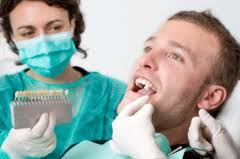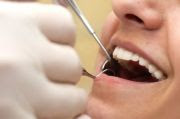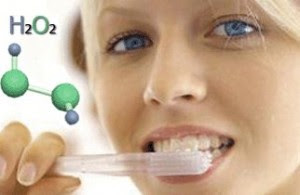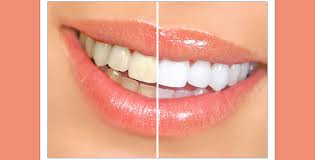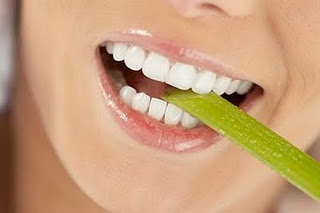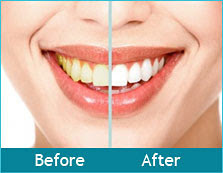The standard fee for teeth whitening and teeth bleaching procedures is about $500 in most cases. Costs can vary depending upon the area of the country you live in and the type of whitening treatment you undergo. Laser teeth whitening is typically over $1000. for example. In-home tray bleaching can cost between $50. and $100. dollars for a total teeth whitening system. Store-bought whitening strips can cost as little as $25.
Wednesday, February 15, 2012
costs of teeth bleaching
The standard fee for teeth whitening and teeth bleaching procedures is about $500 in most cases. Costs can vary depending upon the area of the country you live in and the type of whitening treatment you undergo. Laser teeth whitening is typically over $1000. for example. In-home tray bleaching can cost between $50. and $100. dollars for a total teeth whitening system. Store-bought whitening strips can cost as little as $25.
Teeth Whitening Procedure
Tooth whitening (or bleaching) is a simple, non-invasive dental treatment used to change the color of natural tooth enamel and is an ideal way to enhance the beauty of your smile. Because having whiter teeth has now become the number one aesthetic concern of most patients, there are a number of ways to whiten teeth.
Friday, February 3, 2012
Factors affecting teeth bleaching part 2
Heat and light
The rate of chemical reactions can be increased by increasing the temperature, where a 10 8C rise can double the rate of reaction. The use of high-intensity light, for raising the temperature of the hydrogen peroxide and accelerating the rate of chemical bleaching of teeth was reported in 1918 by Abbot. Other approaches for heating the peroxide have historically been described to accelerate tooth bleaching, such as heated dental instruments. However, excessive heating
can cause irreversible damage to the dental pulp.
The rate of chemical reactions can be increased by increasing the temperature, where a 10 8C rise can double the rate of reaction. The use of high-intensity light, for raising the temperature of the hydrogen peroxide and accelerating the rate of chemical bleaching of teeth was reported in 1918 by Abbot. Other approaches for heating the peroxide have historically been described to accelerate tooth bleaching, such as heated dental instruments. However, excessive heating
can cause irreversible damage to the dental pulp.
Factors affecting teeth bleaching part 1
1. Type of bleach
The majority of contemporary tooth whitening studies involve the use of either hydrogen peroxide or carbamide peroxide. This latter material is an adduct of urea and hydrogen peroxide which on contact with water breaks down to urea and hydrogen peroxide. For example, a 10% (w/w) carbamide peroxide gel would yield a maximum of 3.6% (w/w) hydrogen
peroxide. In general, the efficacy of hydrogen peroxide containing products are approximately the same when compared with carbamide peroxide containing products with equivalent or similar hydrogen peroxide content and delivered using similar format and formulations, either tested in vitro or in vivo.
Mechanism of tooth bleaching
Bleaching is a decolourisation or whitening process that can occur in solution or on a surface. The colour producing materials in solution or on a surface are typically organic compounds that possess extended conjugated chains of alternating single or double bonds and often include heteroatoms, carbonyl, and phenyl rings in the conjugated system and are often referred to as a chromophore.
Friday, January 27, 2012
Tooth Bleaching Risks
Tooth bleaching in modern aesthetic dental medicine, The bleaching effect is caused by active oxygen. There are no changes to the tooth enamel and nothing is removed, sanded down or etched. Possible Side Effects:
One of the most common side-effects is a temporary hypersensitivity of
the teeth when in contact with hot or cold stimulation; this can also
apply to the necks of the teeth.
Thursday, January 26, 2012
Advantages Of In-Office Teeth bleaching
There are many different options available for you to choose from today when it comes to using teeth whitening gel. There are in-office types of procedures as well as out of the office or at home kits and systems. They both offer some advantages that you can consider when deciding which is the best method and system for you. There are some significant advantages to the in-office or in the dental office methods of teeth whitening that should be considered.
How To Use Teeth bleaching Kits Effectively
There are many different teeth whitening products that are currently available over the counter. This means that they can be used by anyone at any time. There are a number of compelling advantages to using teeth whitening kits. They are very convenient and portable, meaning that they can be used on the go, in the office, on vacations or trips, as well as in the comfort and privacy of your own home. They are designed to be very affordable, but they are also extremely effective, often yielding striking results within only a few treatments.
teeth bleaching with Hydrogen peroxide
Hydrogen peroxide is produced by the combination of oxygen and
hydrogen, and has been routinely and safely used in the process of
teeth bleaching for years. In typical hydrogen peroxide teeth bleaching
solutions, you'll find a strength of 3% to 10% with varying degrees of
effectiveness. One thing to consider is that you may experience
sensitivity when using hydrogen peroxide to whiten your teeth,
particularly in your gum area. However, the discomfort is usually
minimal and can be equated to a burning sensation that typically does
not last once the peroxide solution is removed or rinsed from the
teeth.
Tuesday, January 24, 2012
Safety Concerns with Tooth Bleaching Materials
Concerns regarding the safety of all bleaching treatments and products have long existed, but were heightened since the introduction of at-home bleaching.5-8 Discussions in this section focus on peroxides and their use as active ingredients in tooth bleaching materials. Important concerns related to patient examination and diagnoses are addressed elsewhere in this report. A variety of peroxide compounds, including carbamide peroxide, hydrogen peroxide, sodium perborate and calcium peroxide, have been used as active ingredients for bleaching materials; however, essentially all extracoronal bleaching materials currently available for whitening of vital teeth in the United States contain carbamide peroxide and/or hydrogen peroxide.
Factors affecting tooth whitening
Type of bleach
Various teeth bleaching products
The increase in the number of over-the-counter products that claim to have "tooth bleaching" properties, and the emergence of new treatment methods directly available to the public, give rise to a number of questions.
COSMETIC PRODUCTS
Sunday, January 22, 2012
Get the Facts on Teeth bleaching
We all want a whiter smile, and today, it can be accomplished safely, quickly, and effectively. While tooth whitening is the quickest and most cost-effective way of improving a healthy smile, there are so many options available for getting teeth their whitest, that it can be confusing to choose the best method.
teeth bleaching
Dental bleaching, also known as tooth whitening, is a common procedure in general dentistry but most especially in the field of cosmetic dentistry. A child's deciduous teeth
are generally whiter than the adult teeth that follow. As a person ages
the adult teeth often become darker due to changes in the mineral structure of the tooth, as the enamel becomes less porous.
Teeth can also become stained by bacterial pigments, foodstuffs and
tobacco. Certain antibiotic medications (like tetracycline) can also
cause teeth stains or a reduction in the brilliance of the enamel.
What is teeth bleaching ?
Teeth whitening is a highly effective way of lightening the natural colour of your teeth without removing any of the tooth surface.
Why whiten my teeth?
White teeth look great- attractive, youthful and clean. Few people have naturally white teeth, and teeth can become darker with age. Smoking and drinks such as tea, coffee and red wine will also progressively darken the teeth.
What does teeth whitening involve?
Teeth whitening is a bleaching process that lightens discoloration and removes stains from within the enamel of the teeth. During your consultation the procedure will be discussed with you to determine if tooth whitening is suitable in your case. Teeth whitening does not affect the colour of artificial teeth, crowns, veneers or fillings.
Subscribe to:
Comments (Atom)

